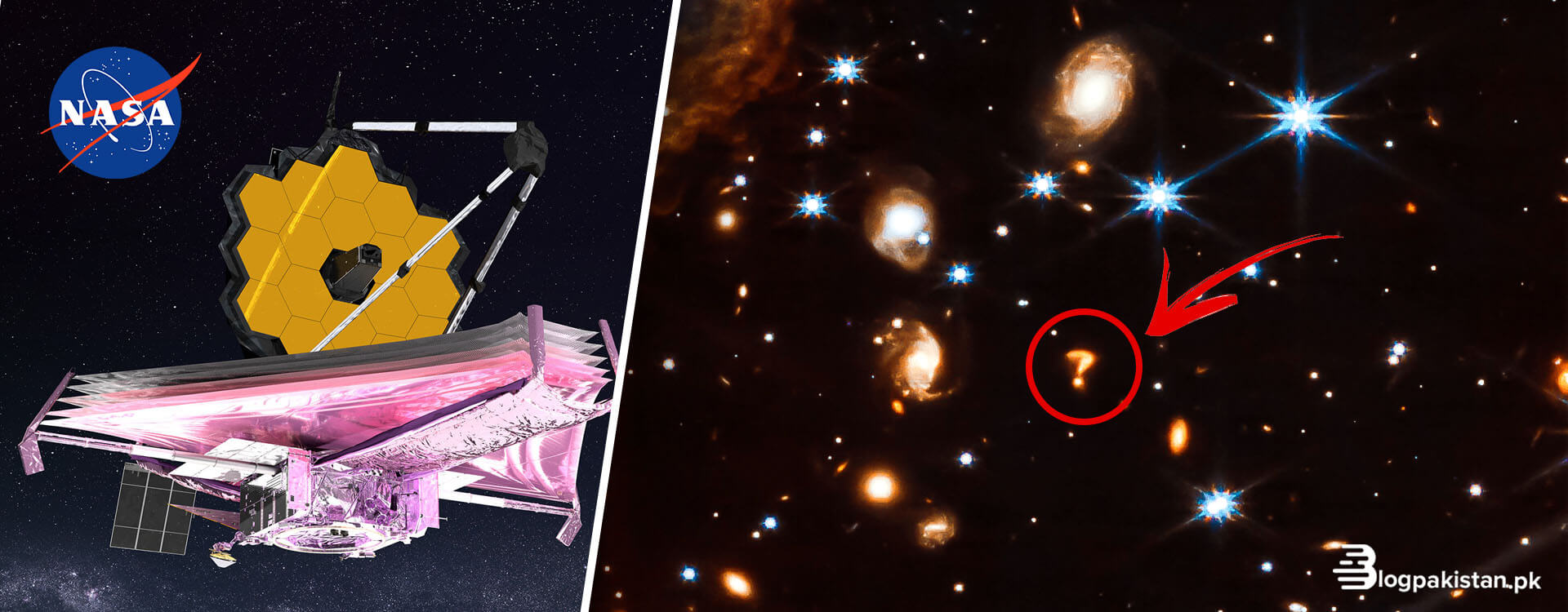Recently, the JWST team shared an image showcasing two young stars, Herbig-Haro 46/47, in the process of formation.
Interestingly, beneath these stars, an object resembling a “cosmic question mark” emerged in the deep-space image.
While the nature of this object remains uncertain, its color and shape spark intriguing discussions about its meaning.
The detected stars are located in the Vela Constellation, surrounded by a material disk that nurtures their growth over millions of years.
These stars are located 1,470 light-years away (1 light-year is 9 trillion km).
The Cosmic Question Mark
Although the exact identity of the question mark-shaped object is unclear, experts suggest it might be a distant galaxy or a result of interacting galaxies, possibly forming its unique shape.
The object’s red color in the image indicates its considerable distance from us, and this could potentially be its first observation.
Matt Caplan, an assistant professor of physics, proposed that the object might signify two galaxies merging, with the upper part of the question mark representing a larger galaxy undergoing disruption.
Despite multiple possibilities, the absence of the typical refraction spikes associated with stars in JWST images suggests that it’s not a star.
Galactic mergers are common cosmic events that lead to larger, elliptical galaxies. This process involves gravitational forces causing stars, gas, and dust to mix, potentially triggering intense star formation and black hole mergers.
About the James Webb Space Telescope
Launched in 2021, the James Webb Space Telescope is a collaboration between NASA, ESA, and the Canadian Space Agency.
It aims to reveal the universe in various wavelengths, aiding in understanding star and planet formation, detecting early galaxies, and exploring dark matter and dark energy mysteries.
The James Webb Space Telescope (JWST) is designed to specifically conduct infrared astronomy with its high-resolution and high-sensitivity instruments
It can view objects too old, faint, or distant that were not possible to be detected by earlier telescopes such as the Hubble Space Telescope.
As JWST uncovers these captivating celestial wonders, it signifies the continuous exploration of the cosmos and the potential for new scientific breakthroughs.
The Telescope continues to provide insights into the early universe while uncovering new mysteries, depicted as question marks.















